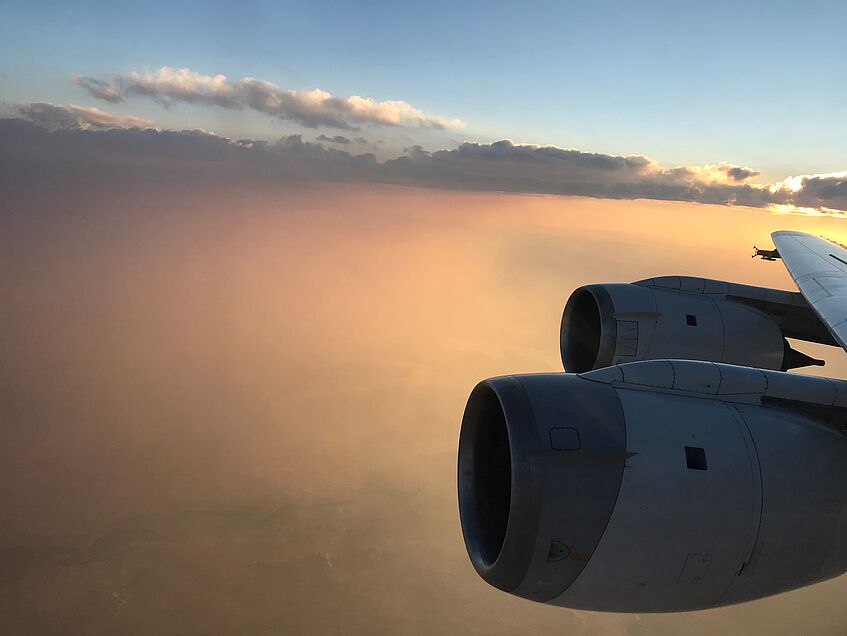Smoky flight sequence during FIREX-AQ!

© Manuel Schoeberl
Title of the project: Coarse mode aerosol in biomass burning and mixed absorbing aerosol layers
Name of the VDSP student: Manuel Schöberl
Project supervised by: Bernadett Weinzierl
Hi, my name is Manuel and I research in the Aerosolphysics group of Univ.-Prof. Dr. Bernadett Weinzierl. As a team of researchers of the University of Vienna we participated in the NASA/NOAA aircraft field campaign FIREX-AQ last year. With our instrumentation we measured coarse (size > 1µm) and giant (size > 10µm) aerosol particles in smoke plumes from biomass burnings. For my doctoral project, I investigate the occurrence, transport and impact on Earth’s climate of those particles. When I’m not analysing the collected data I enjoy reading an autobiographical book or watch a football game.
For FIREX-AQ the NASA research aircraft DC-8 was equipped with an extensive payload of trace gas and aerosol instruments. Research flights were designed to follow smoke plumes from the source of the fire downwind, in order to understand the transport and change of the smoke properties. The image was taken during a flight, shortly before the aircraft entered dense smoke, originating from a wildfire in the US state Arizona. At the end of the wing you can see the instruments, which play a crucial role for my dissertation: The Cloud, Aerosol and Precipitation Spectrometer and the Precipitation Imaging Probe measured the shape and size of aerosol and cloud particles in the size range from 0.5 to 6200µm. First results show that coarse and giant aerosol particles stay longer in the atmosphere than expected. These are the first important findings, which are worth exploring further in 2021!
